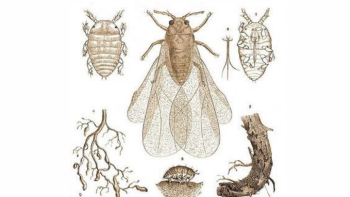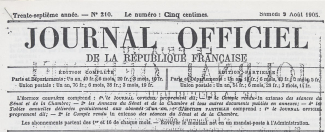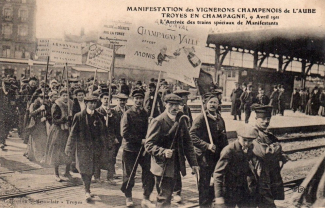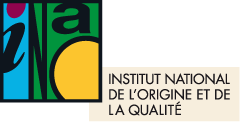1905-1935: the beginnings of appellations d'origine: a response to the food and wine crises
Appellations of origin are the result of activism on the part of the French wine industry, as part of a quest for quality in fine wines and eaux-de-vie.
At the end of the 19th century, the proliferation of Phylloxera, a parasitic vine aphid, ravaged French vineyards, leading to a spectacular drop in production. After decades of struggle and technical innovation, production recovered strongly at the beginning of the 20th century. This was correlated with massive imports, notably from Algeria, which the wine industry developed following the destruction of the French vineyards. The resulting overproduction and fraud led to a spectacular collapse in prices, jeopardizing the national wine business.
Faced with a serious crisis affecting one of the nation's main assets, producers needed to protect their qualitative and economic heritage. As a result, every aspect of production, from soil particularities to grape varieties and growing methods, was defined and proposed to producers with the aim of achieving the highest quality standards associated with the appellation.

Legislation establishing the concept of appellation d'origine did not emerge spontaneously; it is the final fruit of a thirty-year evolution, initiated in 1905, and marked by numerous bills, speeches and reports to Parliament.

The date of August 1, 1905, a founding text for the repression of fraud, also marks the creation of the so-called administrative appellations. On this basis, the administration was charged with delimiting the areas benefiting from an appellation of origin for agricultural production. This law recognized the collective nature of appellations of origin, but contained no provisions relating to quality. This legislation was crucial in protecting wines from the major fraud crisis.
The first decrees concerned the Champagne (1908-1911), Cognac (1909) and Bordeaux (1911) appellations of origin.
To make up for the shortcomings of the 1905 law, the May 6, 1919 law on appellations of origin aimed to protect producers attached to an appellation, thereby establishing a collective right of ownership. Applicable to all types of product, the law simplified administrative procedures, eliminating the need for a prior decree and requiring only a declaration. The law authorized recourse to the courts in the event of a dispute, and enabled trade unions to take action. This step thus marked the creation of the so-called simple or judicial appellations.

Purely geographical use, devoid of quality criteria, led to the development of mediocre wines, resulting in a decline in quality wine production and legal unfair competition, where consumers were often misled about the true quality of the products.
The law of July 22, 1927, amending the 1919 law, attempted to resolve these problems, by prohibiting direct-producing hybrids and taking into account local, loyal and constant production customs. However, it came too late for the wine sector.
Find out more about the History of INAO
- Key dates for official signs identifying quality and origin (SIQO) and INAO
- A brief history of official signs identifying quality and origin (SIQO) and INAO
- 1905-1935: the beginnings of appellations d'origine: a response to wine crises
- 1935-1970: the advent of INAO and the creation of appellations d'origine contrôlées
- 1960-1990: the creation of the Label Rouge and the recognition of organic farming
- 1990-2000: the development of SIQO in Europe and the extension of INAO's missions
- 2000 to today: INAO, a policy tool for promoting French agricultural products
- Bibliography
